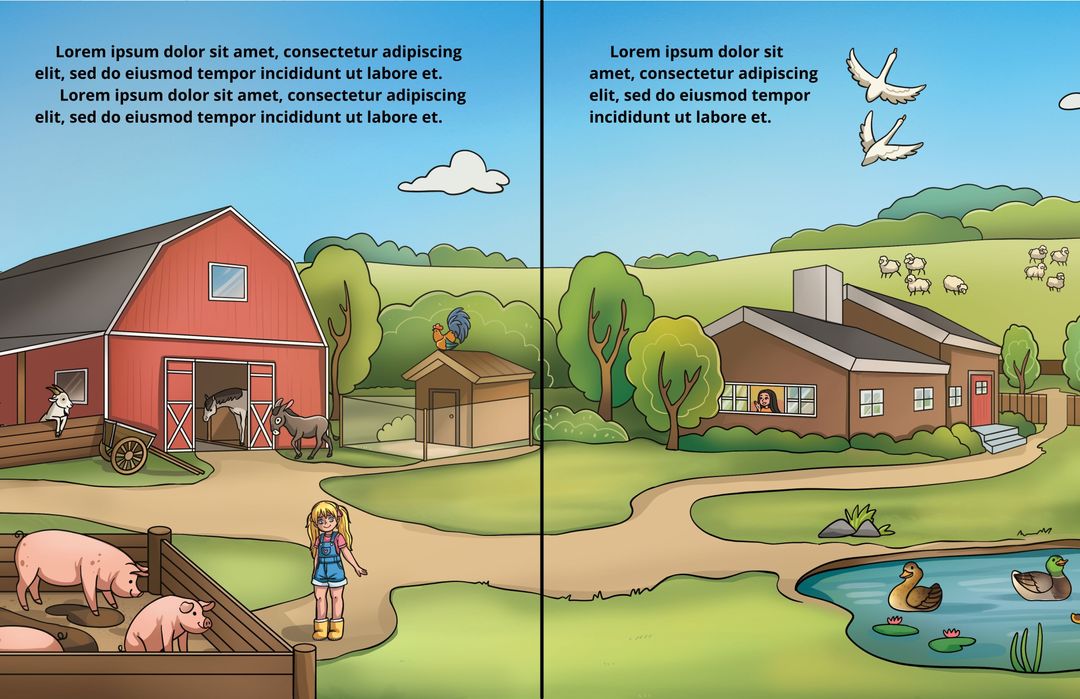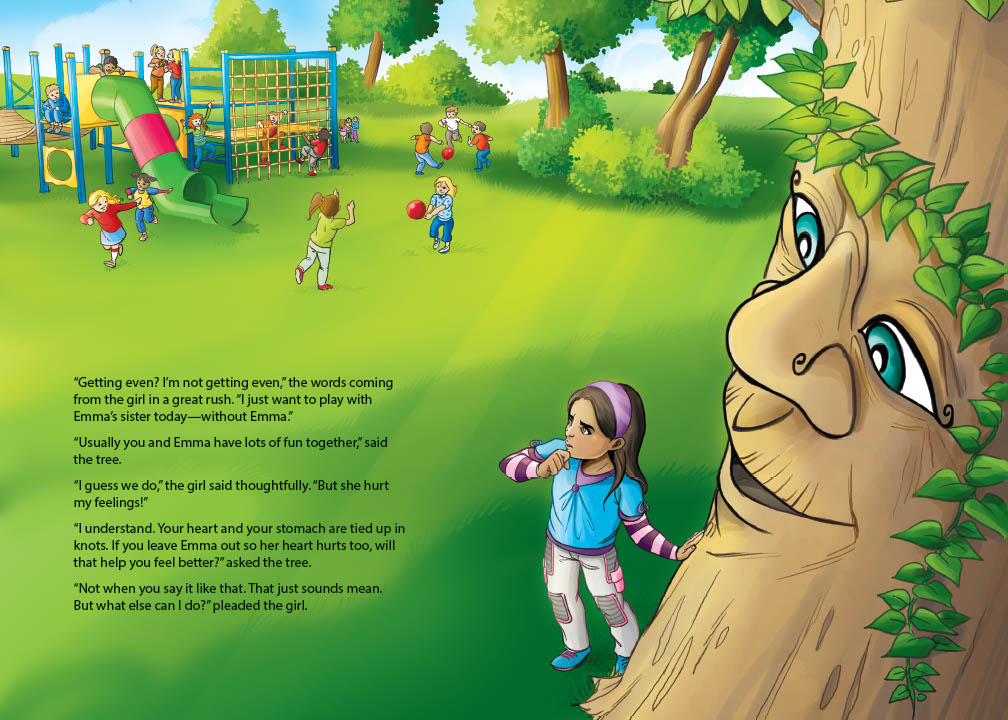What is a children’s book layout?
Children’s book layout is the act of selecting what text and what illustrations will go on each page of a children’s book. This is particularly important for picture books and early reader books, as these books are intended for the youngest readers who rely on illustrations to aid in story comprehension. The illustrations in a picture book help children contextualize text by giving visual cues to the meaning of the words on a page. As a result, the placement of illustrations and text must be properly planned long before illustrations commence. This is the purpose of a children’s book layout, and it is one of an author’s most valuable tools.
What are the elements of children’s book layout?
When planning a children’s book layout, it is essential to take into account page count, bookend sheets, front matter, story pacing, and page turns. It is also important to know whether you plan to print a book through a traditional offset printer or a print-on-demand service, as the method of printing impacts both page count and bookend sheets.
Picture book page count
The standard picture book page count is 32 pages. Almost all picture books put out by children’s book publishers are 32 pages, but there are exceptions. Picture books also come at 24 pages, 40 pages, and 48 pages. Although it’s a good idea to stick to traditional page counts (after all, that’s what readers are used to!), if you plan to self-publish, you do have more freedom.
How does on-demand printing impact page count?
The two biggest self-publishing companies are Amazon KDP and IngramSpark. IngramSpark requires a minimum page count of 16 pages; that page count must be divisible by 2. Amazon KDP requires a minimum page count of 24 pages for a paperback book and 76 pages for a hardcover book. Page counts must be divisible by 4 through Amazon KDP.
Picture book layout
Before diving into picture book layout, an author first must understand how books are constructed and the differences in construction between a paperback and a hardcover book. Moreover, for a hardcover book, it is important to understand book end sheets and the difference between a self-ended book and a book with separate ends.
What is a book signature?
A book signing is a single sheet of paper that is printed, folded, and cut to create the pages of your book. The minimum number of pages created when the paper is cut is four pages, but a standard signature is 16 pages. Each of the signatures that make up your book is then bound together to form what’s called your book block. The book block is the entire interior portion of your book, not counting book end sheets on a hardcover book with separate ends. Front matter, back matter, and the body of the book are all included in the book block.
In a traditional publishing company, books are only printed in page counts that are a multiple of 16 (hence the traditional 32-page picture book). If you look at longer novels, you’ll find that they either have page counts that perfectly reach a multiple of 16 (256, 272, 288), they end with some marketing material, or there are multiple blank pages at the end. That’s because they are trying to achieve the right page count. But why does it matter? Because NOT printing to a signature of 16 pages wastes paper. While printers can—and do—print books in page counts that are instead a multiple of 4 or 8, doing so wastes paper. As an author, you are still paying for a full sheet of the paper regardless of whether you print on it or not. Creating an efficient children’s book layout will result in the most cost-efficient option for book printing.
Book page numbering
It seems obvious to say that a picture book starts on page 1, but what may not be so obvious is where page 1 goes. Books print in spreads that go even-odd, so pages 2–3, 4–5, and so on. The first page of a book is on the right-hand side when you open the book, and the last page of the book will fall on the left. In book publishing, right-hand pages are called recto pages, and left-hand pages are called verso pages.
Below is a sample 32-page picture book template for a paperback book. This shows how pages are numbered, and where two-page spreads fall in a book.
What are end pages?
Hardcover book end sheets, or book endpapers, are the end pages that hold the hardcover book cover to the interior pages. Bookend sheets consist of 8 pieces of paper that get sewn around the book block. Of these eight pages, 4 go at the front of a book and 4 go at the back. It is important to know that end pages are only used on hardcover books, as paperback covers get glued or sewn directly to the book block. The reason a hardcover book needs end pages is that often a book block is too heavy to glue straight to the cover. Bookend sheets are usually thicker stock that provides added stability to the structure of the hardcover book.

What is a self-ended book?
Not every children’s book has 32 pages of content. A self-ended book uses part of the book block to glue the book to the cover. The pages that get used are pages 1 and 32. These pages are called pastedown. They get glued to the inside front and back cover of a hardcover book, and cannot be seen.
With two of your pages glued down, you are left with only 30 pages (pages 2-31) for book content. Below is a sample 32-page children’s book layout template for a self-ended book. Because page 1 is pasted down, the book opens to a full spread, not a single page on the right. Note, in this 32-page picture book template, the book content begins on page 2. The 32 pages do not include designed end sheets, meaning that page 2 is the copyright page, page 3 is the title page, and the story starts on page 4. Whether or not to include designed end pages is up to the author. For each designed end page added to a 32-page self-ended children’s book layout, one page of content will be lost. The 30 pages available to be printed may be used however the author sees fit, whether that means jumping directly into a story or adding designed end pages around a shorter story.
When working with self-ended books, it is important to know that a 32-page book is not the only option. As an author, I prefer to print a 40-page self-ended book. This allows me to include three pages of printed ends at both the front and the back of the book, while still leaving room for a full 32-page picture book. The effect is a book that looks the same as one printed with separate ends, but at a lower cost to print. Creating a 40-page self-ended book also allows me to convert it to a perfect 32-page paperback book without having to make any design changes.

